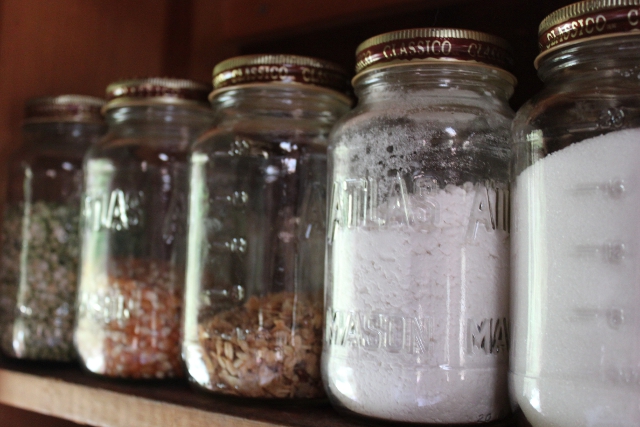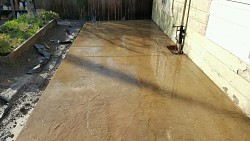Easy Tips for Greening Your House
 Sometimes it seems like greening your home requires a master’s degree, a lot of money, and endless amounts of time. Fortunately, there are actually some very easy ways to green your home to make it easier on the environment, and on your pocketbook. You can save money on utilities, cut down on waste, and maybe even get a little decluttering in while you’re at it.
Sometimes it seems like greening your home requires a master’s degree, a lot of money, and endless amounts of time. Fortunately, there are actually some very easy ways to green your home to make it easier on the environment, and on your pocketbook. You can save money on utilities, cut down on waste, and maybe even get a little decluttering in while you’re at it.
Inside the house, there are a lot of ways to cut down on utility use. Water consumption can be a big problem, especially in a larger household. Take small steps like installing a toggle switch in the shower so you can set the temperature and then turn the water off while you soap up, shave, and perform other tasks instead of just letting it run. Remember not to leave the water running while brushing your teeth, and do the same for dishes; only have the water on if you actually need it to rinse dishes, and consider upgrading to a high efficiency dishwasher in the long term.
Laundry can be a huge energy suck, and there are a variety of ways to cut down on waste. Some low-cost options include using cold or lukewarm water so you don’t spend energy heating the water, and using appropriate load settings. If you only have a small load, try to hold off, or think of something else to add to fill it out. Households with more money to spend might want to consider upgrading to green-certified appliances; sometimes you can get special discounts, rebates from utilities, and other incentives to make the up-front costs lower.
Your water heater can also chew through an energy bill extremely quickly. One of the easiest ways to save money on water heating is to dress your heater up! Instead of leaving it bare, add a layer of insulation so it won’t have to work as hard. You might also consider turning the heat down if you never run water at the hottest setting, and you can also install a timing device that only heats water during specific hours to cut costs even further. When your water heater gives out, you might want to consider upgrading to a tankless heater, which heats water as-needed rather than keeping it hot at all times. If you are considering the tankless water heater, read this Atlanta contractor's advice on tankless water heaters first.
Managing heating and cooling can be a substantial issue in regions with more extreme climates. Dropping the thermostat by even a few degrees can make a big difference—it will still be in the comfort zone, but it won’t use quite as much energy. Consider adding insulation to windows to help maintain the temperature. As windows require upgrading or replacement, double-panes are a good choice for adding further insulation. People with more money might also want to consider replacing insulation in their walls and ceilings to further assist with temperature control.
Another way to green your home is to look for ways to cut down on electrical power use. While many people are careful about only having lights on when they need them, the real culprit behind high electricity use is appliances and devices. Smart power strips can allow you to totally power down such devices when not in use, rather than leaving them in standby mode, which consumes power. Consider purchasing lower-energy appliances when you do need to upgrade, and use your devices wisely. If no one’s watching the television, for example, it probably doesn’t need to be left on, or even plugged in.
Some energy companies and electricians have detailed audits that allow you to break down your own energy use by time of day, so you can see when you use the most energy and how you might work on addressing it. If you notice use spikes when your kids come home from school, for example, you might want to log what people are doing in the house around that time to identify the reason why so much electricity is used.
You may be able to further save money by applying for a time of use plan, which can also help you green your home by creating an incentive to cut down on energy use during peak periods. Under such plans, you’re charged more for using energy at specific times, in exchange for a steep discount at others. This helps your pocketbook and your home, along with the power grid.
Think carefully about the things you bring into your home, as well. Try to stick with minimal packaging, recycled components, and products you can easily breakdown to reuse or recycle. For example, many grocery stores have bulk sections, and you can use and reuse bags for buying bulk products, limiting the packaging you take home with you. Glass jars can be reused for a variety of things, including storage of bulk ingredients, and recycled when they are no longer needed. If a product is heavily packaged, ask yourself whether you really need it or if there’s an alternative available.
As big ticket purchases like new flooring, kitchen remodels, and so forth come up, think about how you can make them green. Buying resources are readily available to help people make informed decisions about the best options for their needs and budget, and individual contractors and consultants can provide additional information. Taking steps like using recycled or reclaimed building materials along with renewable ones can cut down on the environmental impact of building projects. You might also want to consider steps like using environmentally friendly paints, glues, stains, and other products to protect your house, the environment, and yourself—for example, flooring that won’t make you sick with offgassing.
By reducing the amount of things you buy and being conscious about their components, you can save money and green your house at the same time. You can also work on decluttering your house to remove things you don’t use and get a clearer picture of what you actually own; think about getting rid of all those old electronics at an electronics recycling facility, for example, or donate books you aren’t reading to the library or a community organization.
Looking for a Pro? Call us (866) 441-6648

Plumbing Average Costs
Plumbers Experiences

Yard Cleanup By A Local Landscaper Who Cares About Customers

Concrete Patio Is The Finishing Touch For An Artist's Studio



